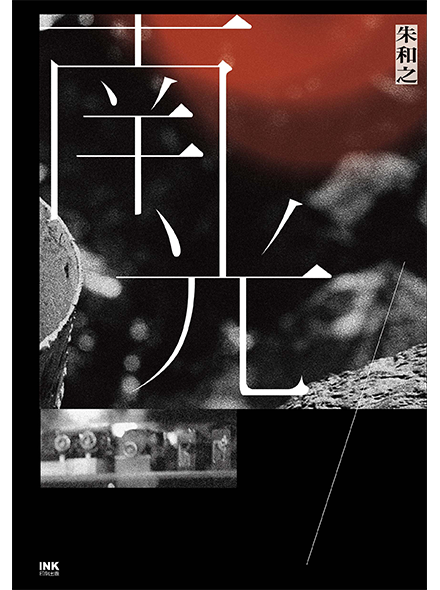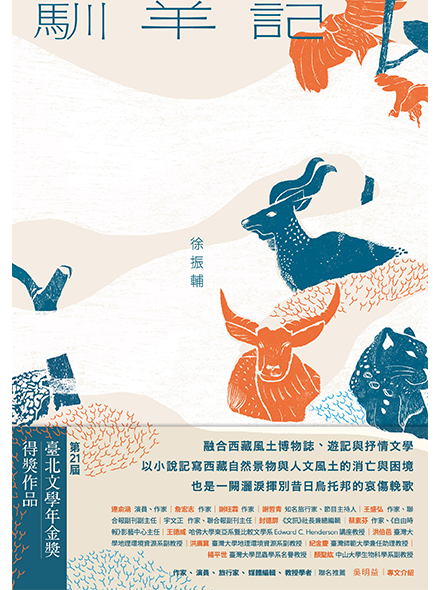Photography is a visual language that can capture cultural history, technological achievement, and the transformation of individuals and communities in a single moment. But what about the heart behind the lens? Chu He-Chih’s novel brings readers deeper into photographers’ perspective, their passion in capturing the fleeting instant – a facial expression, a moment of deep emotions, a religious ceremony – and depicts what pursuing and preserving these images means to a constantly changing world.
Aura of the South tells the story around Teng Nan-Kuang (鄧南光), an iconic figure and pioneer of Taiwanese photography. Readers follow Nan-Kuang’s profound passion for photography through Taiwan’s turbulent transformation from Japanese colonization and the one-party Kuomintang dictatorship all the way to the present day. The story burgeons with the diversity of cultures on the island, especially portraits of the Hakka community, which withstood major challenges of cross-strait immigration, the transition from Qing dynastic rule to Japanese colonization, and the times after the second World War. It also reflects what languages and tongues mean during years of substantive cultural transformation: Hakka being a disappearing language since colonization, and what learning Japanese means to Hakka-Taiwanese community that lives in this in-between island. The story also shines light on significant contributors to photography in Taiwan, including Li Ming-Tiao (李鳴雕), Lang Ching-Shan (郎靜山), and Chang Tsai (張才), who contributed their artistic energy to memorialize Taiwan’s everlasting historical moments.
The language of Aura of the South is gentle, classical, bursting with resonances of Hakka, Japanese, Mandarin Chinese, and the language of photography and passion. As readers are guided through the past, we watch the evolution of cameras and the intersection of the photographic gaze with the rapidly transforming world. Teng Nan-Kuang’s camera takes us back to the first sight of a world-traveling spaceship crossing through the heavens; his observations of the prosperity of Tokyo streets, of Taiwan, the island, of Hakka families, life and death, and the beauty of women’s faces, bodies, and emotions during that era. The perspective of the story mainly follows Teng Nan-Kuang, but also shifts to every photographer who stands out in this era, and does not shy away from bringing women’s voices, bringing photography, art, and a sense of wonder in witnessing the evolution of technology and the transition of the island’s fate.
The novel is a winner of the prestigious 2021 Romain Rolland Literary Prize in Taiwan. Throughout the years, Chu He-Chih has won various literary awards with his historical fiction, investigating and exploring the history of Taiwan in deep nuances, bringing readers with immersion of everyday life in the island’s past and reflecting on our identity, living in a land full of various cultural influences that shifts our languages constantly. Aura of the South especially brings a story that amplifies disappearing languages, highlights the underrepresentation of art in Taiwanese society, and demonstrates how colonial history generates complex cultural intersections that still influence Taiwan to this day.
Aura of the South is a novel that travels across the world and through time, shining a light on the artistic treasures we seldom glance at nowadays. It invokes a spirit of devotion and enthusiasm for art in an attempt to speak to the identity of islanders who inhabit in-between cultural space. Chu He-Chih’s narratives incorporate in-depth exploration of the Taiwanese history, especially for those of the underrepresented voices. Facing the danger of erasure under colonization, dictatorship, and lack of attention nowadays, the story gives photographers, women, and Hakka communities a space to be seen. It is one of the most compelling novels that emphasizes the reality of Taiwan across time and urges readers, time and time again, to try to remember the art that comes across history, while exploring ways to make them everlasting.
Read more:
- Chu Chih-Hsien: https://booksfromtaiwan.tw/authors_info.php?id=376
- Light of the South: https://booksfromtaiwan.tw/books_info.php?id=413



